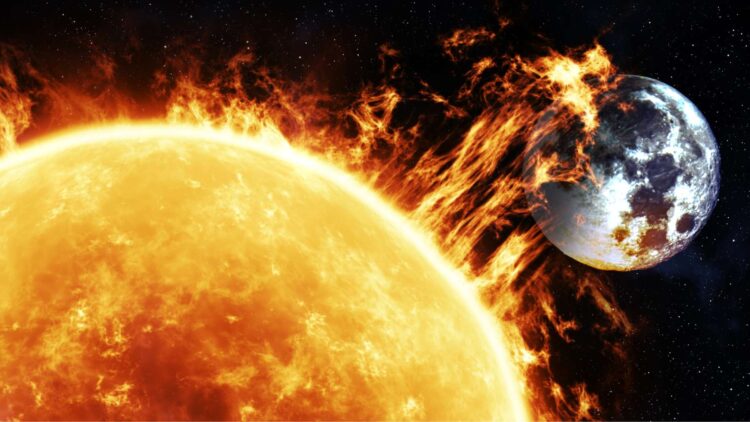Solar flares are a recurring phenomenon that have happened since the beginning of the galaxy as we know it, but while before all the technology that we use now they went largely undetected and were innocuous enough, they are now a threat to our way of life. And now that we can detect them, scientists at NASA are more and more concerned about the consequences.
And they are not exaggerating. Solar flares have been known to disturb radio signals, navigation systems, power grids, and even risks to astronauts and spacecraft hanging out in orbit.
The two solar flares that NASA is alarmed by
The first of the two latest solar flares happened off on May 13 at 11:38 a.m. EDT, and NASA’s Solar Dynamics Observatory caught the whole thing. This one got tagged as an X1.2 flare, which, as NASA put, plainly: “X-class denotes the most intense flares.” A few hours later, the sun let out another flare early May 14 at 4:25 a.m. EDT. The second flare, stronger than the first, was an X2.7. Like the earlier blast, this one came from sunspot region AR4087
Vincent Ledvina, a space photographer who also studies space physics at the University of Alaska-Fairbanks, was clearly impressed. He summed up the experience by stating “Wow” and he also posted a concerning follow up, “This is getting intense, especially as this active region turns closer into view.”
While most of us must have heard about solar flares, few of us truly know t they are and the impact that they have on Earth and our technology. For starters, NASA defines a solar flare as “an intense burst of radiation or light on the sun” and as they further explain, “These flashes span the electromagnetic spectrum – including X-rays, gamma rays, radio waves and ultraviolet and visible light.”
I short, they are explosions that according to the American Space Agency have as much energy as “a billion hydrogen bombs,” and are the biggest explosions that we have been able to identify as of today, at least within our solar system.
Solar flares are rated on a scale: A, B, C, M, and X. A is the weakest, and X is the strongest of the bunch, and despite how far the Sun is from Earth, once one goes off, it only takes about eight minutes to reach us which means that being prepared and doing anything about it is almost impossible. “The energy from a flare travels at the speed of light, which means it reaches Earth about eight minutes after a flare happens,” NASA said. “Essentially, by the time we see a flare, most of its effects are here.”
Luckily, Earth’s atmosphere and magnetic field keep most of the dangerous particles from reaching the ground and decimating us (another reason why it is key that we take care of our atmosphere) but the flares can still interact in a very negative way with satellites and anything that depends on signals passing through the upper atmosphere. Think GPS, satellite phones, etc..
Looking at current solar activity, the Met Office said, “There are five sunspot regions on the Earth-facing disc, however these are mostly small, simple and with little sign of growth. The most notable is in the north-centre, however this is overall much simpler and less active than a few days ago.”
What might be scary is that, as strong as last week’s flares were, they are not the most extreme we have or that we will see in the future. NASA once recorded what is believed to be the most powerful solar flare in decades in 2003 and according to the records, it was an X28, before NASA’s sensors were overwhelmed by it, which means that it could have been much stronger and it just was not recorded.

